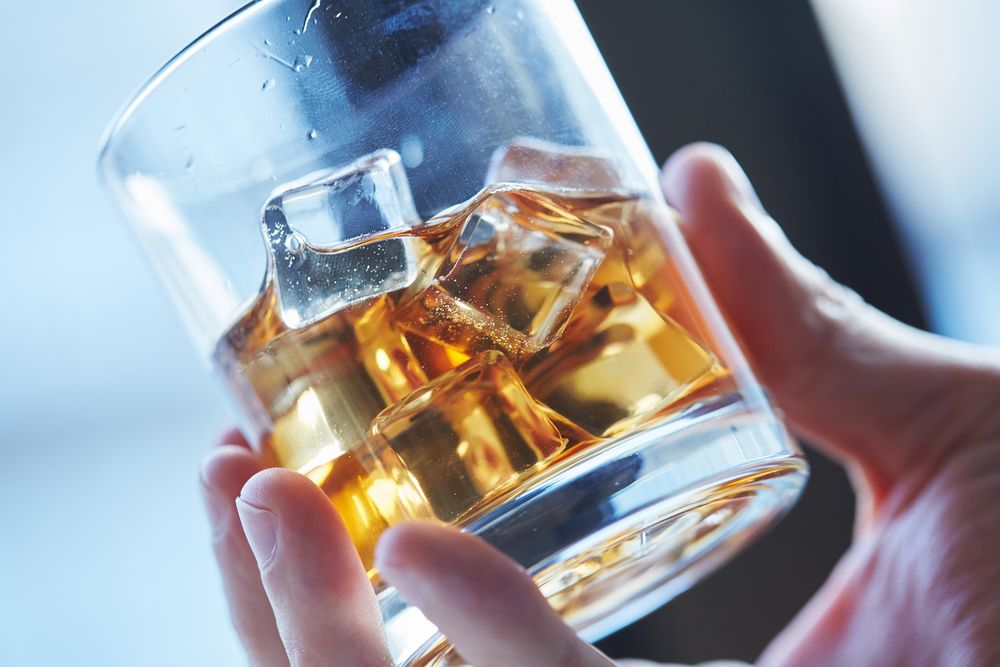Article
Alcohol Consumption Linked to Spinal Structural Progression in Axial Spondyloarthritis
Author(s):
Previously, smoking was the sole known modifiable predictor of spinal structural damage, but now alcohol consumption has been shown to be associated with the progression of spinal structural damage in axial spondyloarthritis―specifically by increasing the odds of syndesmophyte progression over two years.
Previously, smoking was the sole known modifiable predictor of spinal structural damage, but now alcohol consumption has been shown to be associated with the progression of spinal structural damage in axial spondyloarthritis―specifically by increasing the odds of syndesmophyte progression over two years. (©MalochkaMikalaiShutterstock.com)

Alcohol consumption is associated with spinal structural progression in patients with axial spondyloarthritis, say researchers writing in Arthritis Research & Therapy this month.
Several risk factors may predict spinal structural progression in spondyloarthritis, such as pre-existing syndesmophyte, high baseline disease activity, older age, male gender and smoking. There is limited information about the relation between alcohol consumption and inflammatory arthritis. Previous studies have shown that moderate alcohol consumption may have a preventive effect on developing rheumatoid arthritis, and excessive alcohol intake may increase psoriatic arthritis risk, but the effects of alcohol consumption on progression of spinal structural damage in axial spondyloarthritis have not been evaluated. This study aimed to fill that gap.
“The present study showed that alcohol consumption increased the risk of spinal structural damage in the aspect of mSASSS [modified Stoke Ankylosing Spondylitis Spinal Score] and syndesmophyte progression, wrote the authors, who were led by Seung-Ki Kwok, of the Catholic University of Korea in Seoul. “Previously, smoking was the sole known modifiable predictor of spinal structural damage.”
In the prospective cohort study, researchers analyzed 278 patients with axial spondyloarthritis enrolled from a single tertiary hospital for the progression of spinal structural damage and grouped them into alcohol drinkers (206) and non-drinkers (72). Baseline data and two-year follow-up radiographic data were compared between the groups. Researchers also looked for the predictors of spinal structural progression in mSASSS and syndesmophyte count.
A change in mSASSS over the two-year period was more prominent in the alcohol drinkers than in the non-drinkers, 2.7 ± 3.6 versus 1.5 ± 2.8 (P = 0.007), as was a respective change in the syndesmophyte count, 0.9 ± 1.3 versus 0.4 ± 1.2 (P = 0.003). The alcohol drinkers showed more frequent mSASSS changes at follow up, worsening two units or more, than the non-drinkers, along with new syndesmophyte, 60.7 percent versus 29.2 percent (P of less than 0.001), or progression of pre-existing syndesmophyte, 51.5 percent versus 26.4 percent (P of less than 0.001), respectively.
As for the predictors of spinal structural progression, alcohol drinking, age, uveitis history, baseline mean grade of sacroiliitis and pre-existing syndesmophyte showed increased odds of mSASSS progression, while alcohol consumption and uveitis history were independent predictors for this progression. An association was found between alcohol consumption, age, male gender, uveitis history, disease activity (very high ASDAS-CRP), baseline mean grade of sacroiliitis, pre-existing syndesmophyte, and new syndesmophyte development or progression of pre-existing syndesmophyte, but further analysis showed that alcohol consumption increased the odds of syndesmophyte progression.
“We did not observe a dose-dependent difference of alcohol consumption in spinal structural progression. Although changes in mSASSS and syndesmophyte count were similar between moderate and heavy alcohol drinkers, it was certain that alcohol drinkers had more spinal structural progression than non-drinkers.
“Although the mechanisms underlying the influence of alcohol on spinal structural damage remains to be elucidated, the concept of alcohol and its influence on gut microbiota and intestinal permeability might help in revealing the mechanisms,” the authors wrote.
TAKE-HOME POINTS
- Alcohol consumption was associated with the progression of spinal structural damage in axial spondyloarthritis.
- A change in mSASSS over the two-year period was more prominent in the alcohol drinkers than in the non-drinkers.
- Alcohol consumption increased the odds of syndesmophyte progression over a two-year period.
- Previously, smoking was the sole known modifiable predictor of spinal structural damage.
- Finally, along with alcohol consumption, a number of non-modifiable factors, such as uveitis history, are linked to spinal structural progression in axial spondyloarthritis.
REFERENCE
Hong Ki Min, Jennifer Lee, Ji Hyeon Ju, et al. “Alcohol consumption as a predictor of the progression of spinal structural damage in axial spondyloarthritis: data from the Catholic Axial Spondyloarthritis COhort (CASCO).“ Arthritis Research & Therapy. August 14, 2019. doi: 10.1186/s13075-019-1970-3




